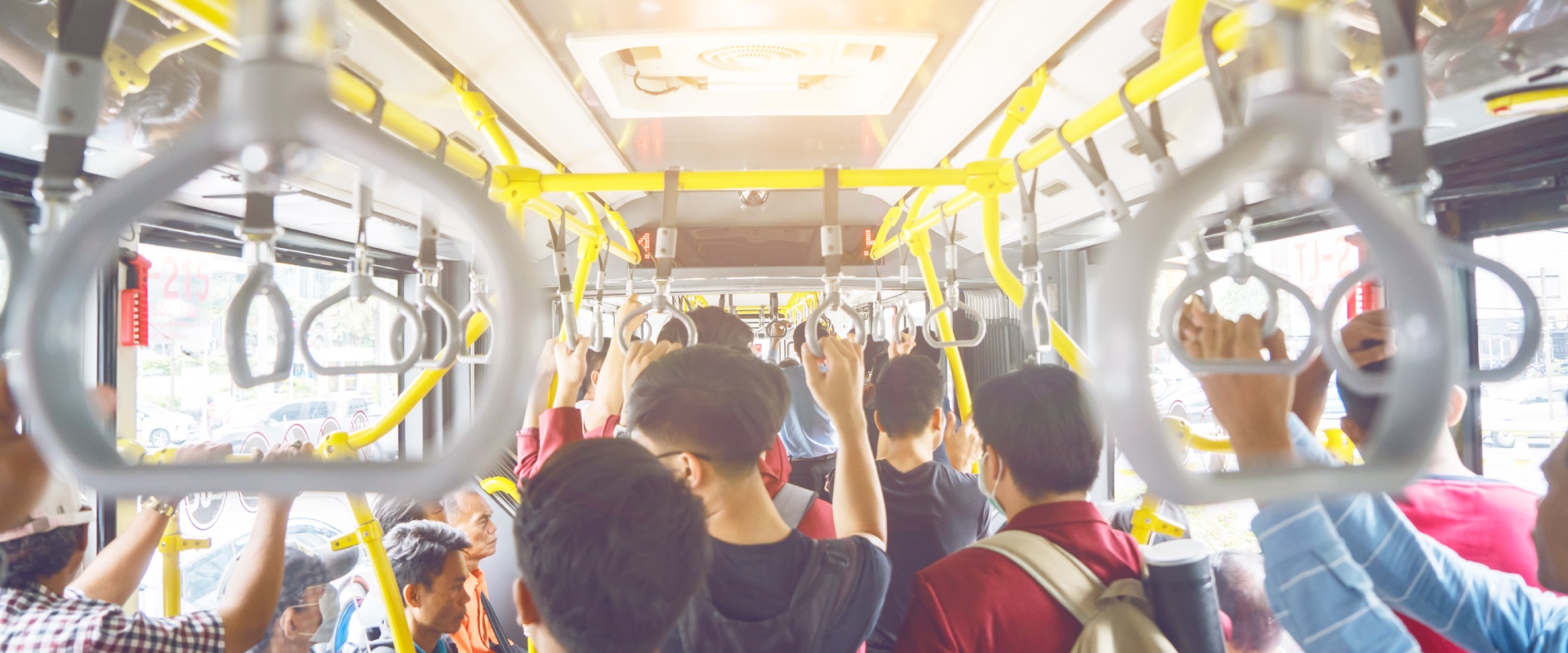Coming down from Alishan village to the Chiayi High Speed Rail station by bus recently, my visiting friends and I opted to sit in the first row, largely so that we could enjoy the magnificent mountain scenery with the benefit of a windscreen. This left me seated behind the driver, a position from which I could see that the bus had an integrated camera system that eliminates blind spots, a reassuring observation considering we were hurtling along one of Taiwan’s infamously dangerous roads.
Despite driving along roads flanked by a sheer drop, we arrived at the station forty minutes ahead of schedule, such was the speed at which the bus traveled. In fact we were able to catch our train north a whole hour earlier than expected and had extra time to get ready for dinner. Of course had there been an accident – which is not unheard of on Taiwan’s mountain roads – it would have been a far less amusing ride.
Managing Adversity
As Concho Valley Transit, West Texas, discovered when they implemented an integrated fleet management system, speeding is one of the major causes of collisions when it comes to public transport – especially in rural areas. Drivers are familiar with routes that they cover day in day out, and this can lead to overconfidence and increased risk-taking. It’s a problem that many will recognize from personal experience, such as my own. The use of cameras on large vehicles such as buses and trucks provides better vision for drivers – undoubtedly an excellent first step, but much more can be achieved with a well-managed and intelligent Advanced Driver Assistance Systems (ADAS) system.
Concho Valley Transit achieved a 58% drop in collisions within a year, and a 57% decrease in the severity of those collisions – partly down to the management practices employed. Equipped with a system that could immediately reference the timeframe of an accident, rather than having to trawl through hours of downloaded footage, the managers were able to pinpoint causes and cross examine using other footage at the same location. Was either party committing a traffic violation at the time? Was a certain intersection particularly prone to such violations? What was the environment on the bus at the time, was the driver distracted?

Using this information, the management implemented a thorough loop-back training scheme where driver behavior was assessed and guidance (and praise as appropriate) passed on. Drivers became more adept at defensive driving, and increasingly began using the system to flag situations independently.
Having communication devices in the vehicle (some dash cams now support two-way communication for example) means that drivers can be managed in real-time. Armed with information on roadworks and traffic accidents, the control center is able to re-route the fleet as necessary, or notify other drivers of the situation. This ensures smoother overall flow of the system, helping to keep roads unclogged and services running closer to schedule. This benefits not only the fleet itself, but other road users.
For the bus companies the ability to focus on accident prevention rather than post-accident assessment alone, allows them to identify and rectify bad driving habits through driver training programs, creating a more positive work environment for all staff, and increased public confidence in their service. A good safety record and the ability to demonstrate a proactive approach are all factors that can help win repeat tenders to boot.
Augmented Driving
As heavy users of public transport, the elderly and the young also benefit greatly from improved driving conditions that augmented driving offers. Onboard cameras that monitor the driver can identify dangerous conditions such as a driver being overly tired or distracted. This can in turn reduce the probability of sudden braking – a major cause of complaint and possible injury for the elderly. The reduction of sudden braking is especially important for city buses as passengers are generally unrestrained and in some instances standing. A Transport for London commissioned report in 2018 showed that in the case of a bus collision, those most likely to be injured were bus occupants.

However, when considering the rate of fatality pedestrians were at the highest risk. Urban buses, which naturally operate in high-density pedestrian areas, were particularly susceptible to such accidents. A common cause is a pedestrian stepping off the sidewalk unexpectedly. While sensors can help to increase the detection rate of an unexpected eventuality such as this, drivers often have less than one second to react.
However, the report also showed that in 40% of cases assessed, there was more than one second to collision, a scenario which potentially allows Advanced Emergency Braking Systems (AEB) to come into effect. AEB systems generally use a combination of camera, radar and sometimes LIDAR to detect risk. With the top six errors in the report relating to the driver not seeing the pedestrian in time, for example they were checking the rear mirror or were otherwise distracted, the report suggests that AEB as a countermeasure could potentially help reduce pedestrian fatalities.
While the march toward fully autonomous cars continues unabated, it is perhaps on public transport that most people will, perhaps unwittingly, first experience the benefits of augmented driving technologies such as ADAS. As the resulting improvements in road safety become more widely reported, it is possible that the public image of autonomous driving will benefit from the implementation of the technology in public transport networks.
Written by Phoebe Cassidy, writer and long-term resident of Taipei, Taiwan.
VIA enables companies to accelerate the deployment of innovative VIA Mobile360 systems and devices featuring addanced collision avoidance, pedestrian detection, and driver fatigue and distraction detection technologies that redefine public safety, convenience, and comfort. To learn more about our full range of VIA Intelligent Automotive Solutions, please click here.
